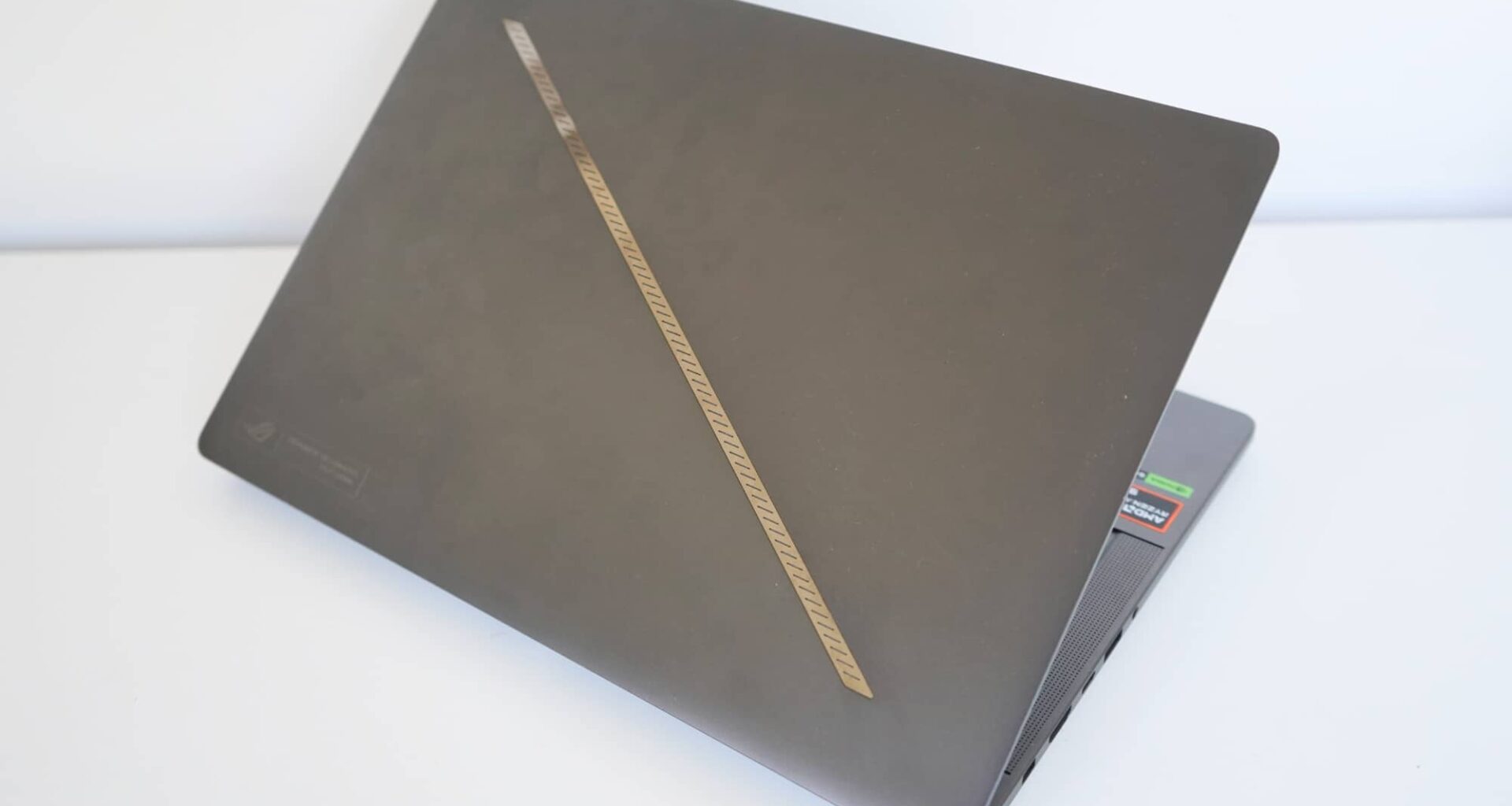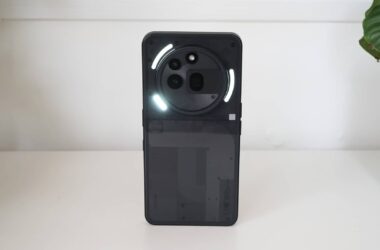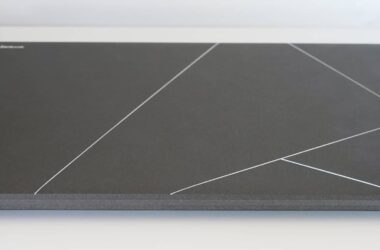Quick review
The good
The not-so-good
Forget the colourful lights and sci-fi looks, the Asus ROG Zephyrus G14 could just win you over with understated simplicity in a gaming laptop.
Design
Offering a simple yet sleek look on the outside, this year’s incarnation of the ROG Zephyrus G14 doesn’t look like your regular gaming laptop. It’s prettier than that.
It is both simple and minimalist without looking offensive in any way. The crazy moulded edges and accents that seem to go part and parcel with gaming laptops aren’t here. Rather, this thing is different.
It’s a 14 inch gaming laptop made from an aluminium chassis, maxing out the thickness at 1.59cm and weighing around 1.5kg.
The Zephyrus is a sexy gaming laptop. There’s no other way to say it. It picks up fingerprints, but it’s still pretty sexy all the same.
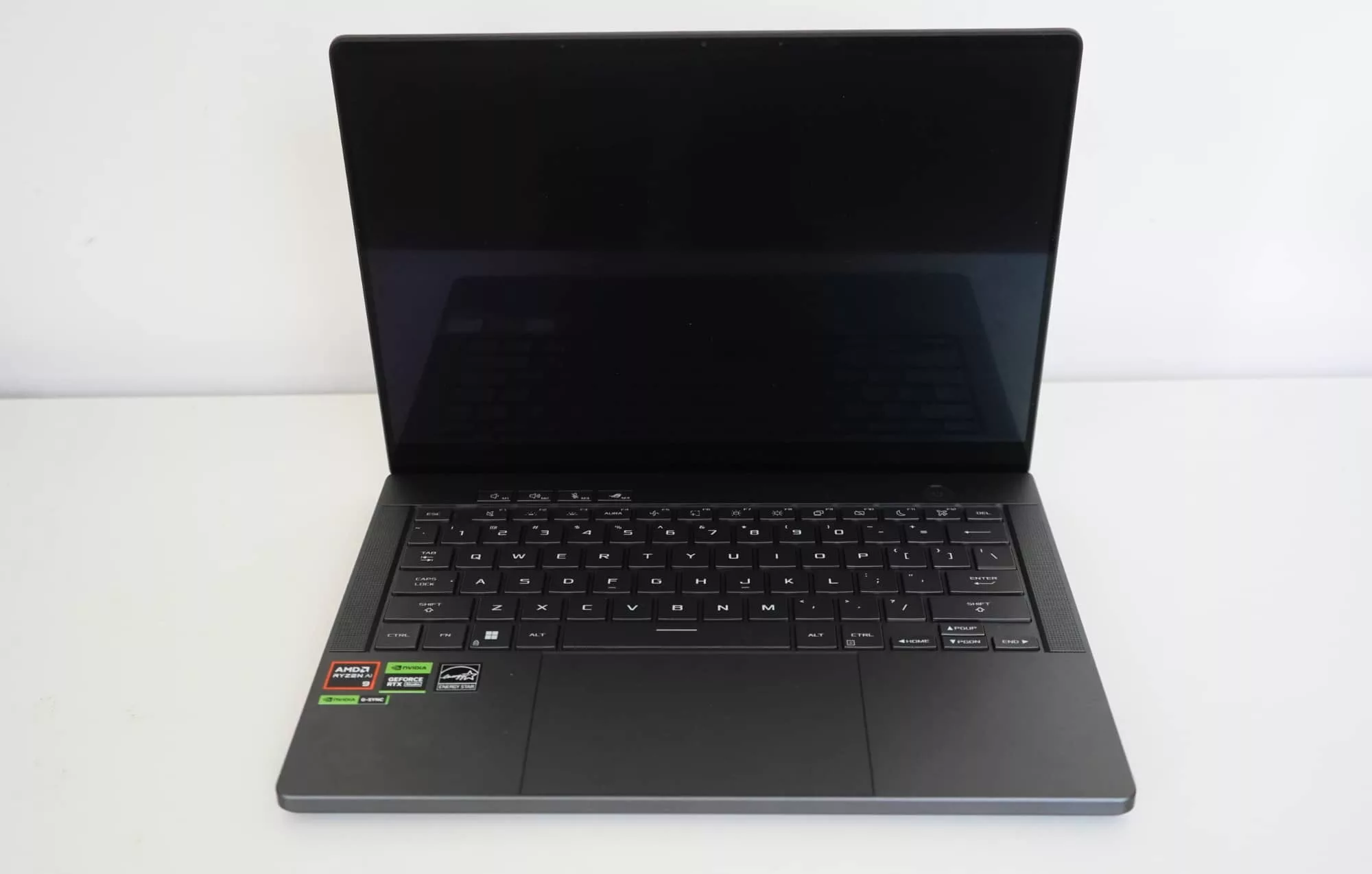
Features
Underneath this sexy chassis is a pretty decent spec list, though Asus has made it easy: you’ll spend a certain amount, and that will change the storage, the memory, and the level of graphics chip. Everything else largely stays the same.
Regardless of how much you’ll spend, the chip found on the G14 is the same: AMD’s Ryzen 9 8945HS clocked at 4GHz, clearly no slouch in capability. There’s a choice of either 8GB to 32GB RAM, up to 1TB SSD, and either an Nvidia GeForce RTX 4050, 4060, or 4070 — again, depending on how much you spend.
For the purposes of this review, our testing was on the Zephyrus G14 spec’d with 16GB and the GeForce 4060, a midrange option in terms of how high end the specs can get.
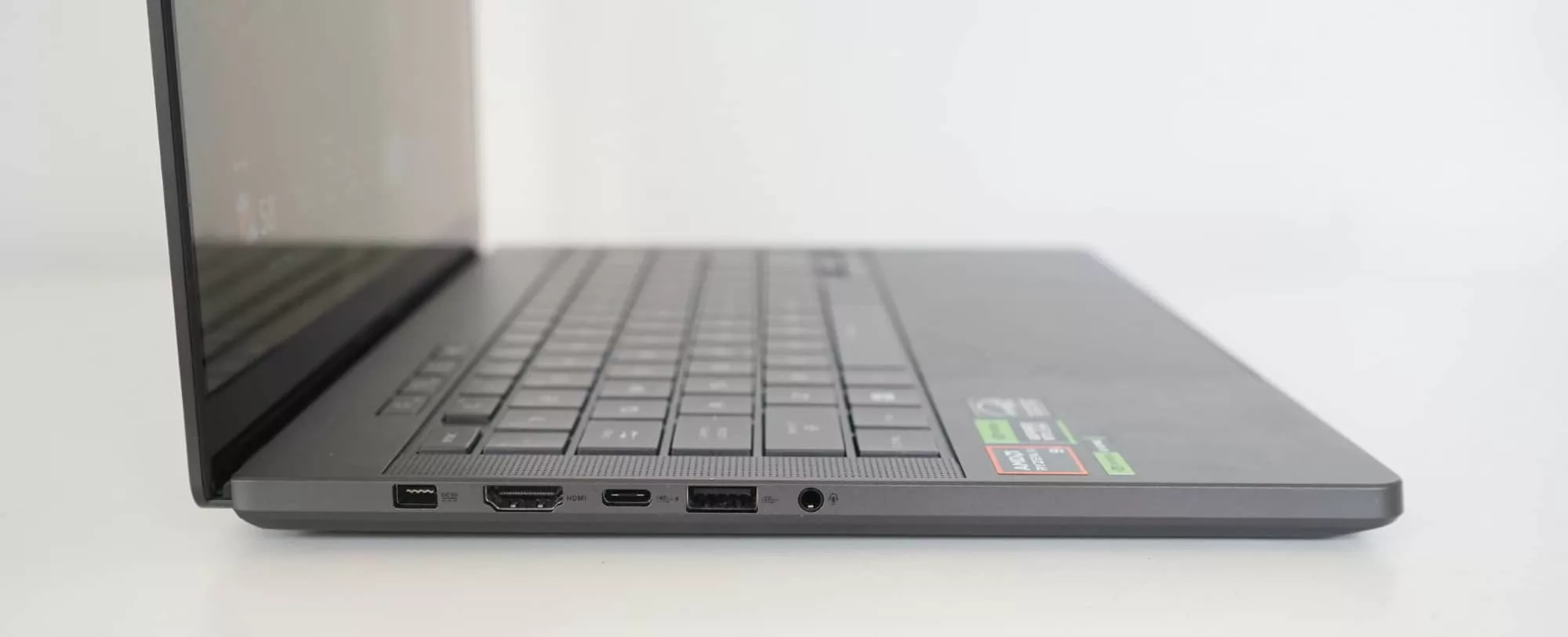
Aside for the main hardware, the ports are decent and varied, providing two Type C (one with USB 4 and the other USB 3.2), two old-school rectangular USB-A (3.2), one HDMI 2.1 port, a microSD card reader, and a 3.5mm headset jack. That should cover most of what you might need.
Microsoft’s Windows 11 Home arrives on the G14, as does a Full HD camera above the 14 inch 2880×1800 OLED screen, four speakers, 3 mics, and support for Dolby Atmos Spatial Audio (albeit virtualised). WiFi is supported through 802.11a/b/g/n/ac/ax WiFi 6E and Bluetooth 5.3, with the whole laptop weighing 1.5kg.
| Model | Asus ROG Zephyrus G14 |
| Chip | AMD Ryzen 9 8945HS |
| RAM/Storage | 16GB RAM; 1TB |
| OS | Windows 11 Home |
| Connections | USB-A, USB-C, HDMI 2.1, WiFi 6E, Bluetooth 5.3 |
| Size/Weight | 1.63cm, 1.50kg |
| Price | Starting from $3099 AUD |
One other feature is a bit of an extra and sits on the outside of the laptop: a strip of tiny LEDs dotted in a diagonal line of a slash that can show light-up patterns and breathing during charging. It’s a riff on something Asus apparently featured in the previous Zephyrus, which saw those tiny LEDs cover half of the laptop lid, and has now been reduced to more of an accent overall.
Will you end up using it proactively? Probably not, but it’s a neat gimmicky addition that will at least guarantee your laptop looks different from everyone else’s.
Display
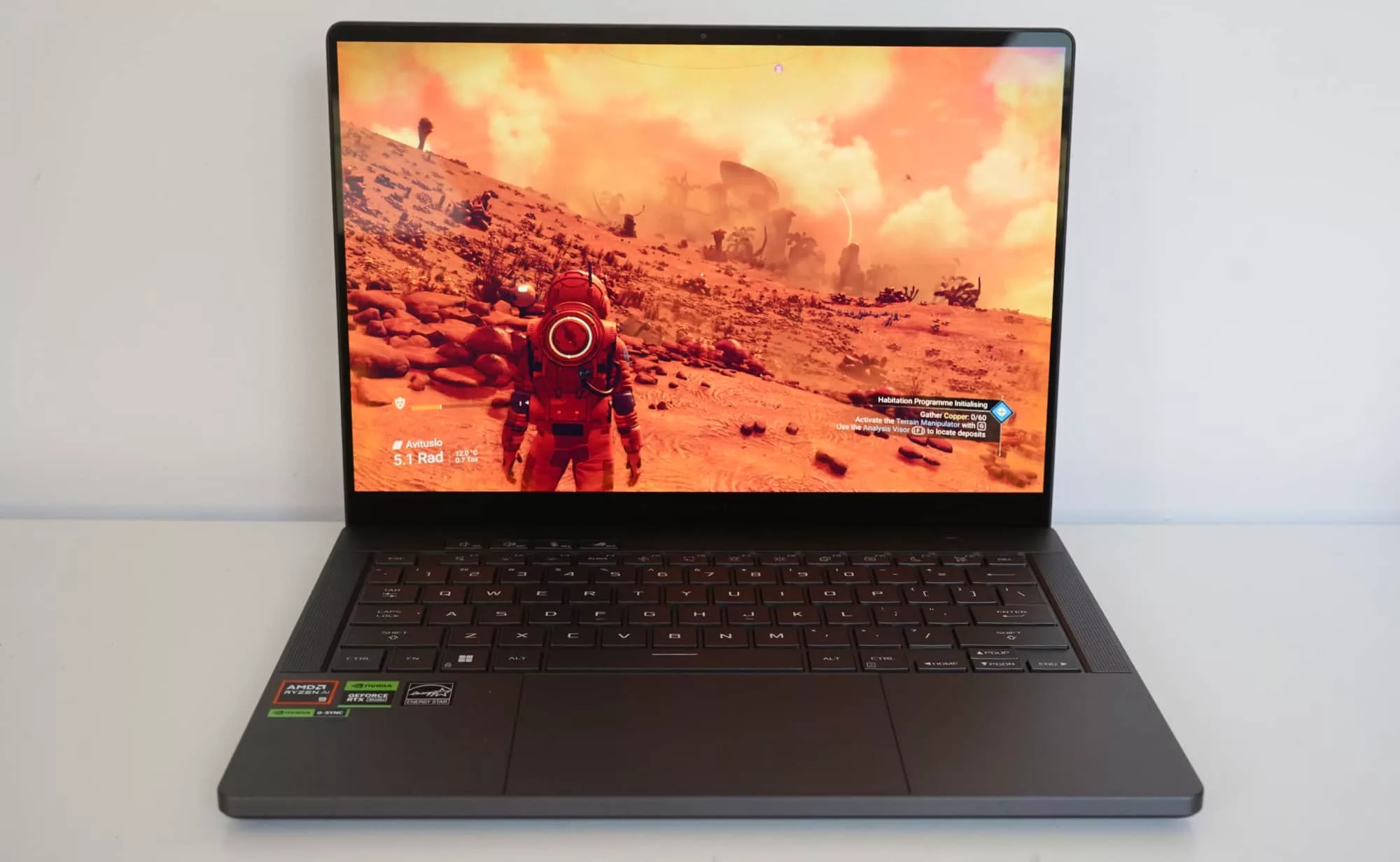
One of the standout features has lights and is far more usable. It’s the screen, which is just a lovely 14 inch 3K display that shines beautifully. Asus calls it a “ROG Nebula Display”, but marketing jargon aside, it’s a 14 inch 2880×1800 OLED panel with a 120Hz refresh rate and support for HDR.
There’s no touch control here — don’t go pointing and prodding this screen, folks — but it’s a great looking display that just shines.
In-use
Get to using the G14 and you’ll find a totally acceptable keyboard and trackpad, though they’re hardly the best in the business.
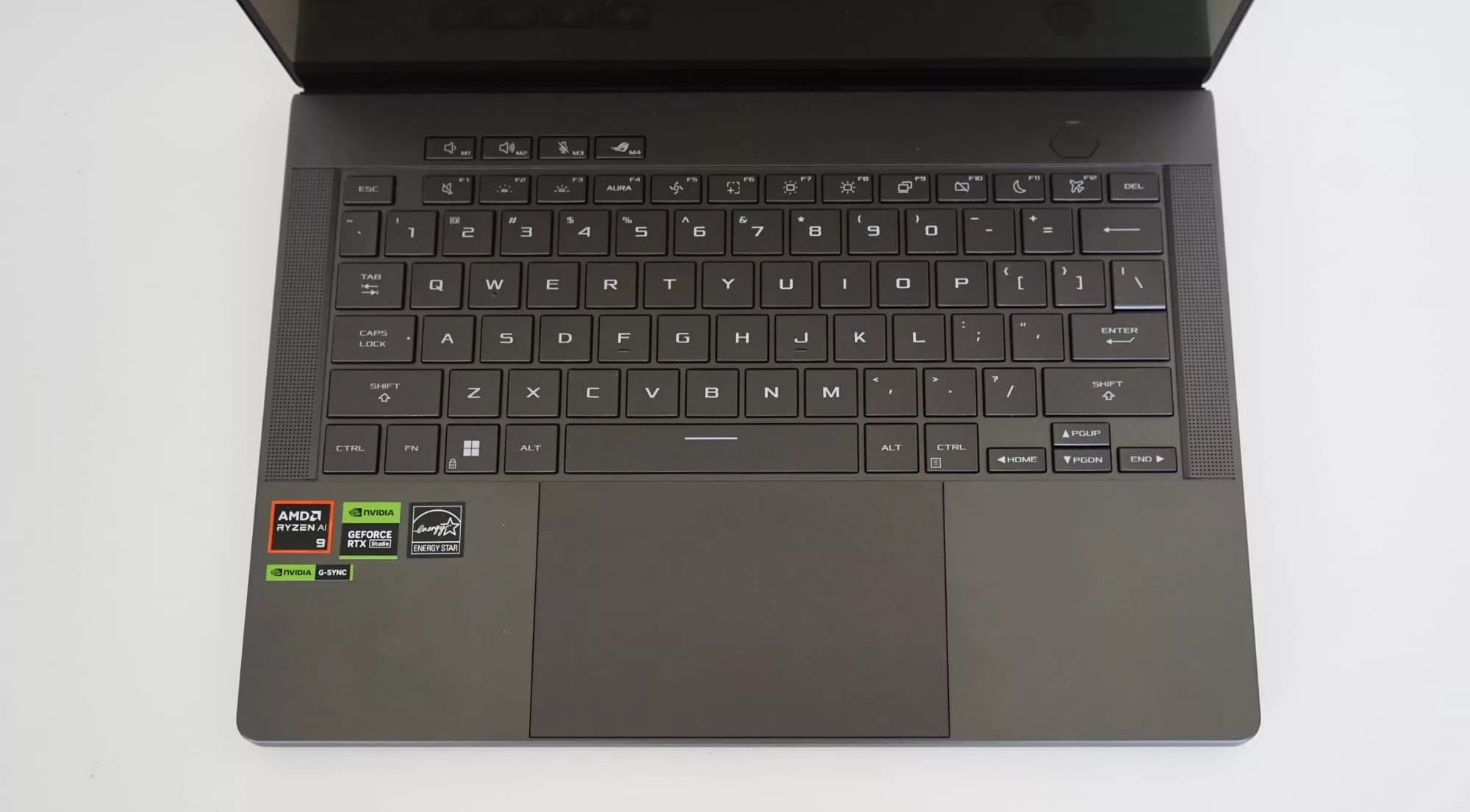
The keyboard is large enough and offers surprisingly spacious keys, even though the travel can feel a little light. Underneath, the trackpad is equally spacious, occupying much of the wrist area, which is both a good and bad thing: lots of space, though it can make muscle memory less useful for finger placement at times.
There is an addition we love, though: an extra set of function keys that sits above your regularly scheduled F-keys. They are your “M” keys, and while it feels that letter is largely arbitrary, you might want to consider these the ROG macro keys, because maybe that’s where the “M” came from.
The extra M-keys are mapped to volume controls, switching the microphone on and off, and pulling up the Asus command centre app “Armory Crate”, but given the right software, and you just might be able to make these little extra keys do something else.
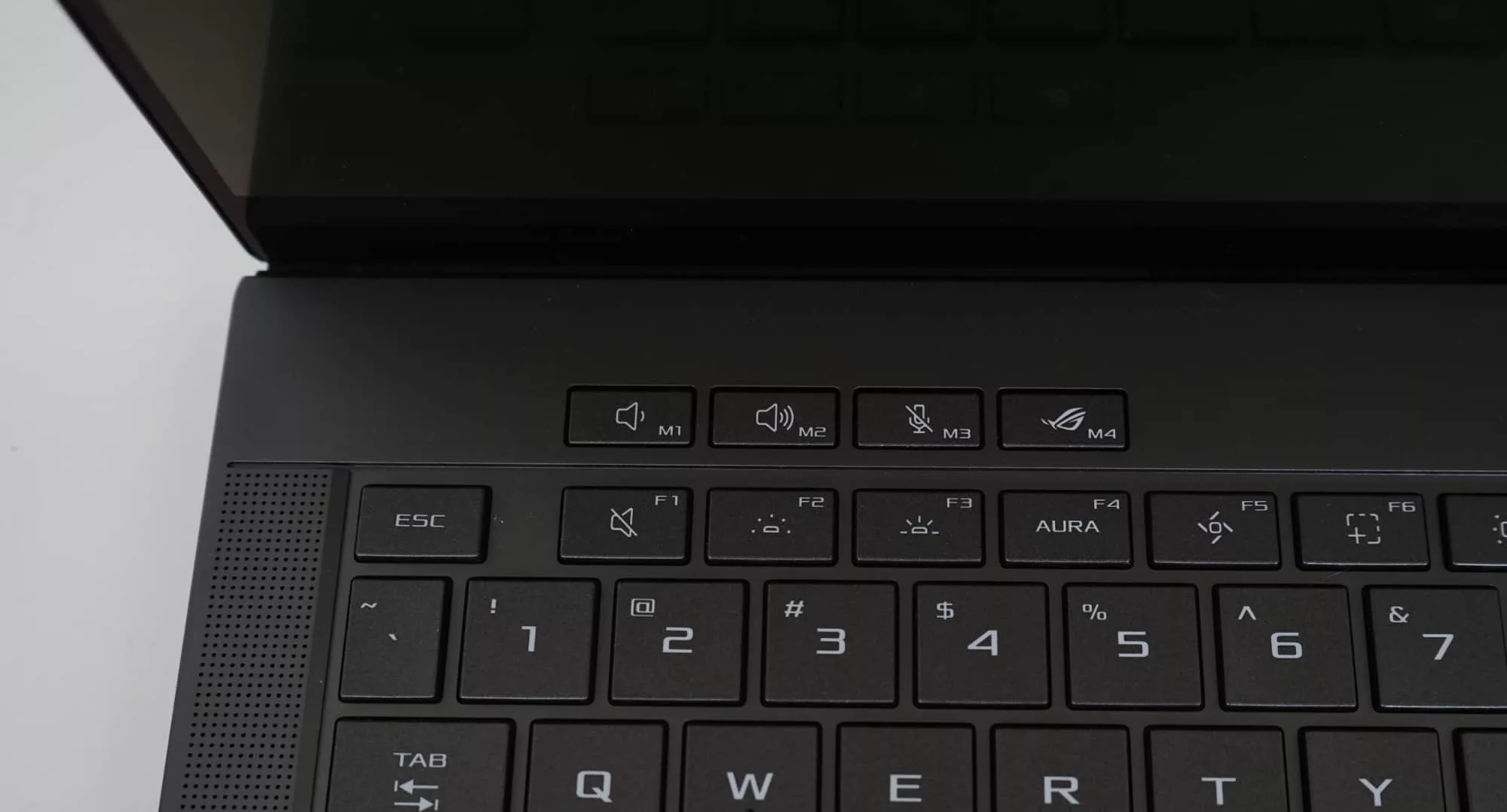
Performance
Benchmarking this machine, the combination of the Ryzen 9 and Nvidia discrete graphics chip means you’ll see a pretty serious amount of performance, rivaling even the latest Intel Core hardware.
The scores are solid and the in-game great, as well. While we don’t spend a heap of time in every game (#parentlyfe), we did find No Man’s Sky managed to deliver totally great playability, whether running at a conservative 1920×1080 with graphics set to high, or even a more aggressive 2880×1800 with graphics set to ultra.
Frankly, the fact that this laptop can pull out all the stops in ultra means you should be able to get through a fair few games in their high settings, at least for a while.
It doesn’t quite hold a candle to the current performance leader in the M3 Max MacBook Pro, but it manages to deliver more grunt than the similarly-equipped Dell XPS 14 this year.
Battery
Overall, the battery life could be measured as “ho-hum”. Laptop performance is invariably hit and miss with gaming machines, but this one feels under where it should be.
Play the odd game or two, and you’ll see the life drop to 2-3 hours, with 80 percent after gaming revealing a battery estimation of a little over two hours. Hmm. We managed a little more than that, but the results weren’t stellar.
In short, depending on what you use the Ryzen-equipped G14 for, the battery life appears to take a dip. That’s a handful of hours for gaming — two-ish — and closer to 5-6 all up, it’s not fantastic, so keep that power supply handy. Any power supply, either the one in the box or via a USB-C port, because it supports both.
Strangely, the Asus charger edges on the side of being proprietary, rather than just sticking with USB-C like everyone else. We’re not sure why.

Value
Priced from $3099, one thing you can’t accuse the Asus G14 of being is cheap. It is most certainly not that.
The specs are high, the design is great, the screen is excellent, and the performance is up there. You’re certainly getting a great machine sand battery life, and it’s one with a discrete graphics chip, something that doesn’t come cheap.
Overall, the value seems to be there.
What needs work?
But what needs work? The keyboard and mouse, with neither feeling as solid as the specs of the system.
Yes, you get a sizeable keyboard and trackpad, so that’s something. Getting used to the traction of either? That’s a different matter altogether.
The travel on the keyboard feels clunky and plasticky, and while the strokes go to the right location, we felt like we needed to try harder to type on the G14. It wasn’t effortless like the best keyboards, and just lacked that specificity you find in better keyboards.
It’s a similar situation with the trackpad, which is wide and spacious, but only feels like you can actually physically click the thing at the bottom. And even then, the action is so tight, it can be difficult to do so.
That whole logic of needing to tap the trackpad — as has been the case on trackpads for quite a while now — feels like a requirement on the G14, almost unnecessarily.
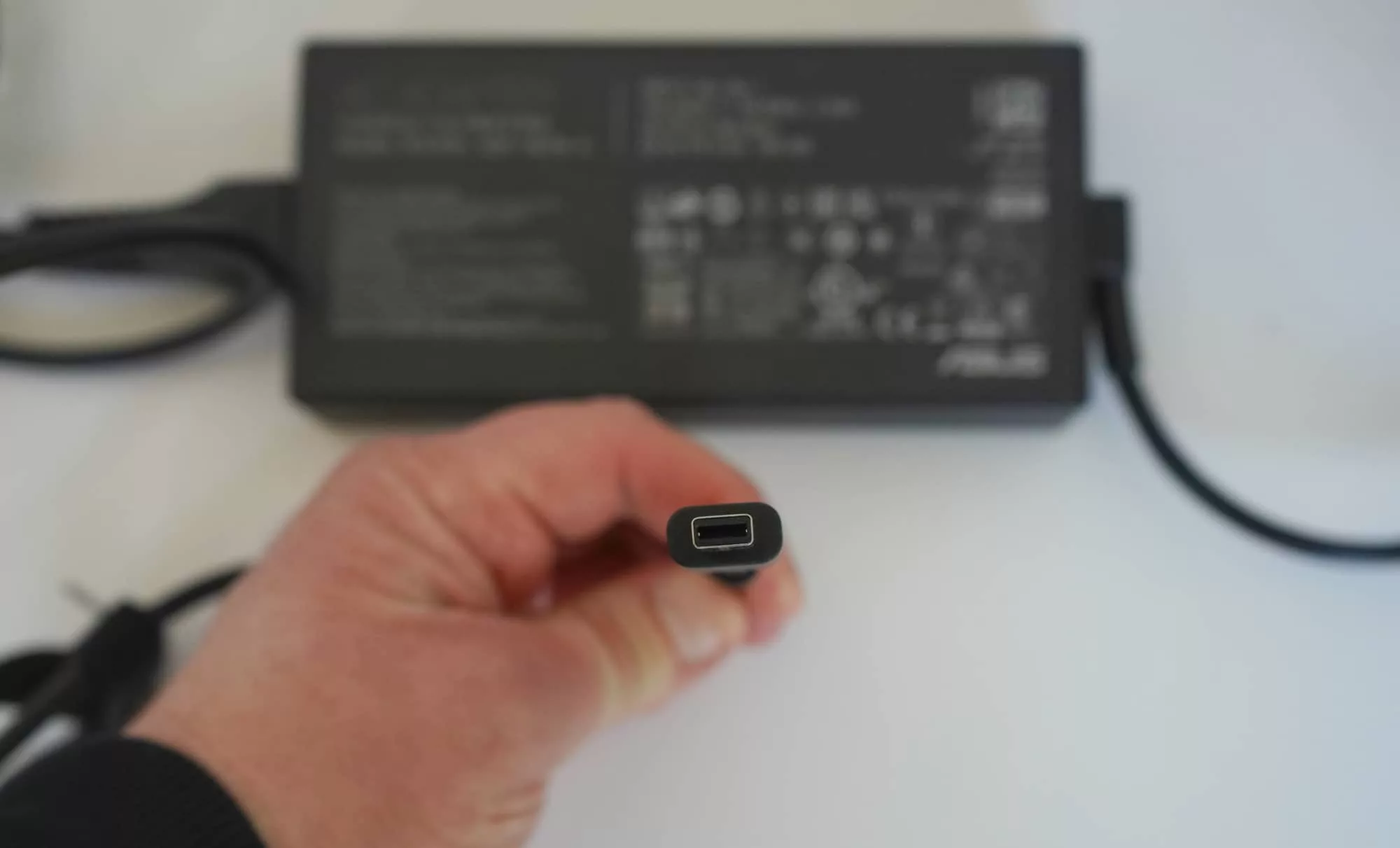
Weirdly, there isn’t just a usability problem on the Zephyrus, but also a charging one, because while you can charge with USB-C, Asus also provides a proprietary charge connector for its larger included a staggering 180W charging brick.
And for this we have to ask why. Why, Asus? Why persist with proprietary ports in an era of scaling that back, and then limiting the output so that only the proprietary connector can charge at full strength? Why?
Pundits might argue that Apple has MagSafe, which it does, but you can still get a full-strength charge from either MagSafe or Type C. Microsoft has its Surface Connector, too, but you have options, either way. With the Zephyrus, your charge pack is specific to this weird-throwback-to-Firewire-800 port (we’re old), and it seems unnecessary. Really unnecessary.
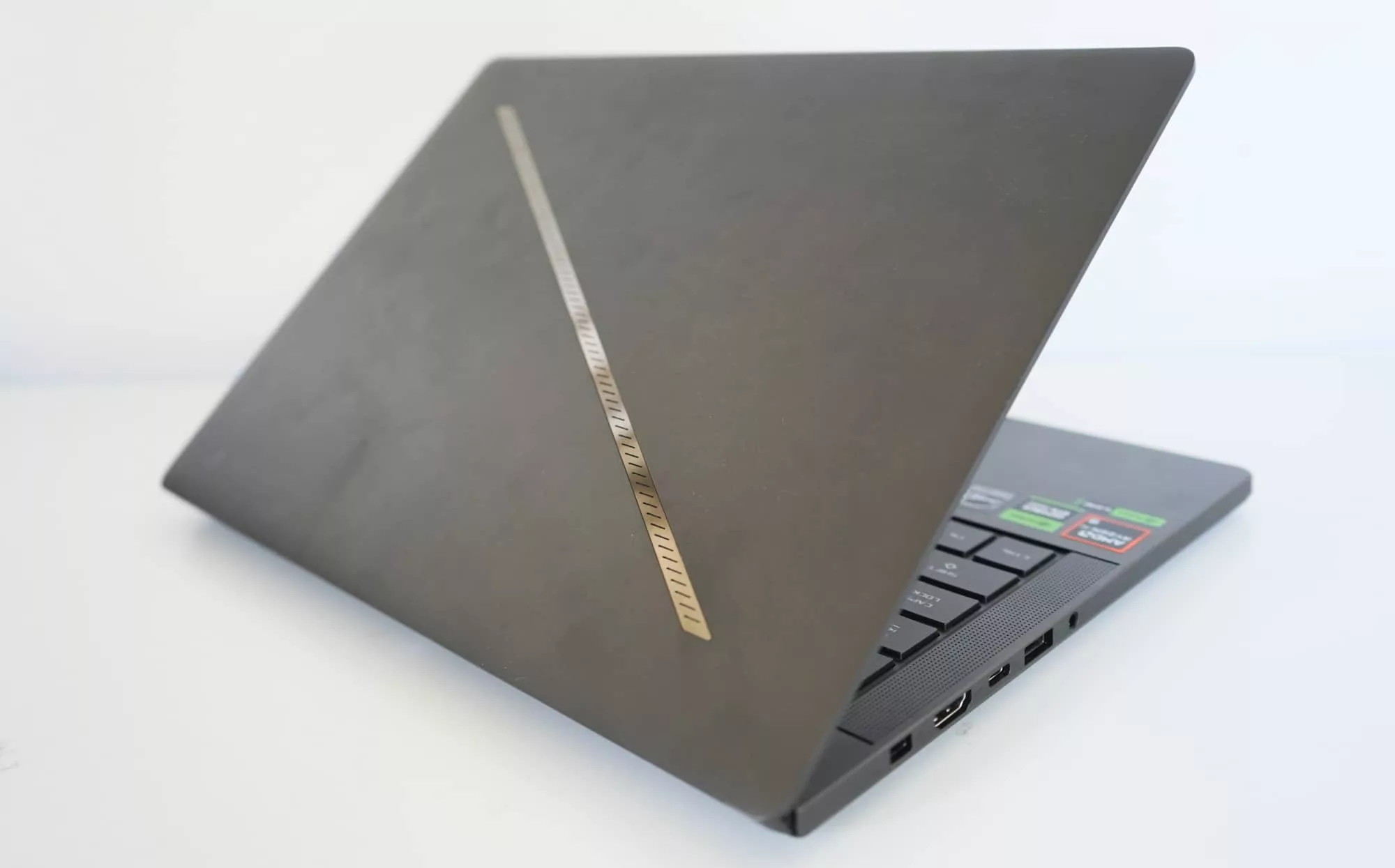
Final thoughts (TLDR)
There are definite reasons to consider the G14. Clearly cut from a different mould, the Zephyrus G14 is not your regular gaming laptop. It’s better than that.
It’s sleek, sexy, and smart. It doesn’t try to impress with overstated accents and aesthetics, and just encourages gamers who want something cool and normal to have just that.
This is cool and normal. It’s the sort of gaming machine we’d use.
There are things that need tweaks and changes — the proprietary charging port for the 180W charging brick is a little on the weird side, as is the battery life feeling like it needs more playing with — but if a great gaming laptop that won’t draw unnecessary eyeballs is your go, the Zephyrus G14 is worth your attention.



